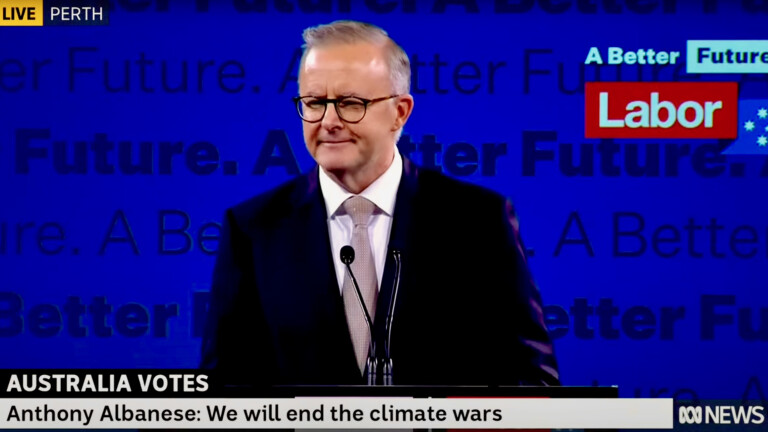
Snapshot
- Consultation opened in September and closed late October
- More than 500 submissions were made to Government
- Most were in favour of transitioning towards electric cars
More than 500 individuals, groups and businesses have responded to a consultation on Australia’s first electric vehicle strategy – making it is clear Aussies want to have their say.
In September, the Federal Government launched the consultation for the Strategy, which it says is designed to “improve the affordability, supply and uptake of electric vehicles”.
The deadline closed for submissions on October 31, with the Department of Climate Change, Energy, Environment and Water receiving more than 500 entries – which covered over 1200 organisations and 1500 individuals.
Overwhelmingly, according to the Department, these were positive and in favour of the country transitioning to electric vehicles, with a spokesperson saying: “We are delighted by the strong advocacy supporting Australia's transformation into an EV powerhouse.
“The Government will be working through the submissions closely over the coming weeks and months.”
Although the full list of entries is not currently yet available, Wheels has canvassed the big players to find out what their views were and what the key issues are facing the Government as it creates a national policy.
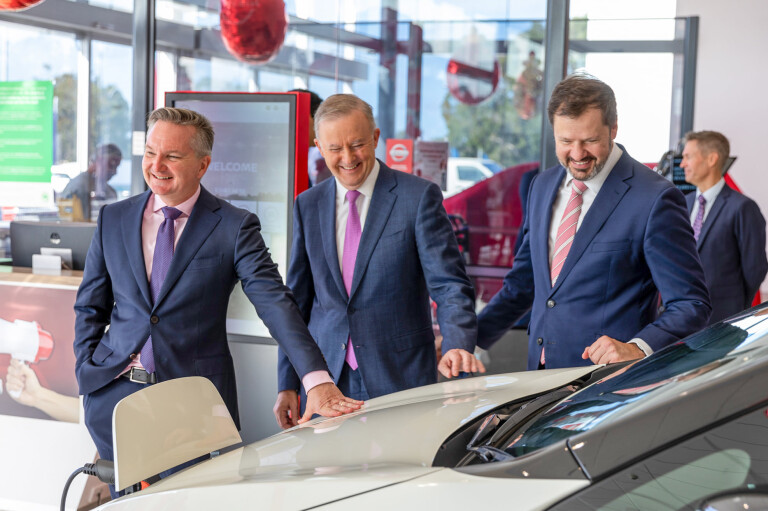
JUMP AHEAD
Australian Automotive Dealers Association (AADA)
No ICE ban
The AADA does not believe in a strict internal-combustion engine (ICE) ban for Australia, as has been set in places such as Europe and California.
“The AADA is fundamentally opposed to bans being applied to internal-combustion engine vehicles due the potential adverse consequences for the environment Australian consumers, and the automotive industry and the people they employ,” its submission said.
“There are simply too many unknown variables to proceed with a ban. The uncertainty around the industry’s ability to meet the demand for EVs means that there are similar concerns around when price parity for EVs will emerge. Consumers who will not be able to afford an EV will simply hold onto their older ICE vehicle for longer, leaving lower- and middle-income earners with vehicles which are more costly to run, less environmentally friendly and less safe.
“The AADA is fundamentally opposed to bans being applied to internal-combustion engine vehicles"
“Three out of five people [surveyed by the AADA as part of its submission to Government] are concerned they won’t be able to afford a vehicle if there is a ban on the sale of ICE vehicles.
Proponents of a ban will point out that there are several ICE bans in other global markets, such as the UK (2030), the EU (2035) and certain US states (California 2035 and New York 2035). The AADA is not certain that these markets will not revise their plans to ban ICE vehicles. There are already signs that OEMs in those markets are questioning the achievability of those bans.”

Grey imports
The AADA is strongly opposed to increasing the supply of imported used EVs on the basis that it says such a move will have adverse outcomes for consumers, risk undermining confidence in EVs among the Australian public, make Australia a dumping ground for old lithium-ion batteries, and threaten Australian automotive businesses.
“The current system in Australia whereby the overwhelming majority of our vehicles come through an OEM type approval has served the country well,” it said. “Other than New Zealand, the importation of used cars has not been used as a strategy to boost vehicle supply by OECD countries – generally most grey imports are sent to developing countries. The influx of used car imports is why the average age of New Zealand’s vehicle fleet is over 14 years compared to Australia’s which is just over 10 years. In terms of road safety, New Zealand has a rate of road deaths per 100,000 population of 6.01 while in Australia it is 4.26.
“Despite the Government previously ruling out a used car import policy, its Specialist and Enthusiast Vehicle Scheme is [now] being used as a back door to bring in a high-volume of used car imports. We believe the SEVs should be restricted, and any expansion should be roundly rejected due to the Government’s previously articulated concerns around consumer protection and safety. While some proponents will argue that used imports provide an avenue to increase EV supply, this will come with the same risks as conventional vehicles and more.
"Specialist and Enthusiast Vehicle Scheme is [now] being used as a back door to bring in a high-volume of used car imports"
“Expanding the importation of used EVs is a regressive, high risk solution. Advanced economies like the United States and the EU have not resorted to such drastic measures in their attempts to boost their used EV markets. This is a lazy policy solution which will discourage manufacturers from supplying new EVs to Australia; will place consumers at risk due to lack of provenance of these vehicles; and will leave Australia with the unenviable task of recycling and disposing of early generation lithium-ion batteries.
“The best way to increase the number of affordable used EVs is to ensure the highest possible uptake of new EVs, which will eventually make their way onto the used-car market. Incentivising and encouraging Government and other fleets to turn over their EVs sooner is another policy lever which can help boost the number of used cars available.”
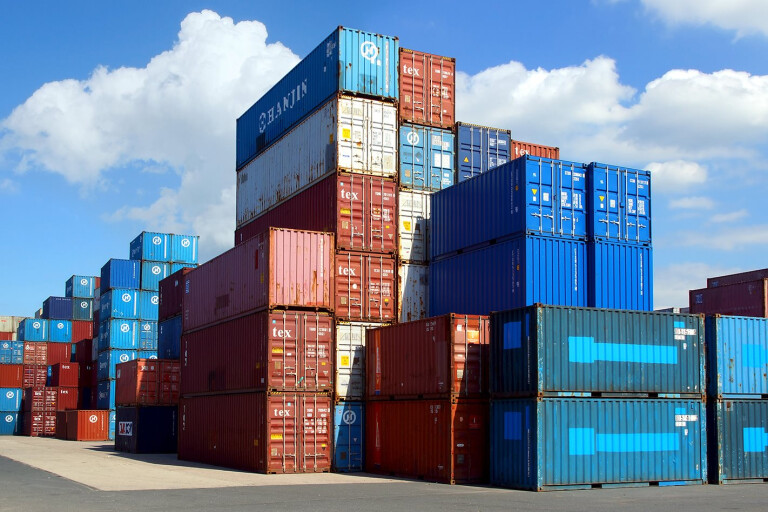
Fuel-efficiency standard
The organisation said it supports a fuel-efficiency standard being introduced, but it “needs to be complemented by financial incentives, tax reform, non-financial incentives and charging infrastructure.”
Additionally, it feels a standard must include; an average emissions (grams of CO2 released per kilometre) target for OEMs averaged across all the vehicles they sell in a given period, an appropriate timeframe for the industry to adjust to said target, and should apply to all vehicles first supplied to the Australian market – including used car importers.
There should be the ability for OEMs to trade credits with each other and to transfer credits between their passenger vehicles/small SUV fleets and their light commercial vehicles/large SUVs fleets, as well as penalties for OEMs who exceed the target, according to the AADA.
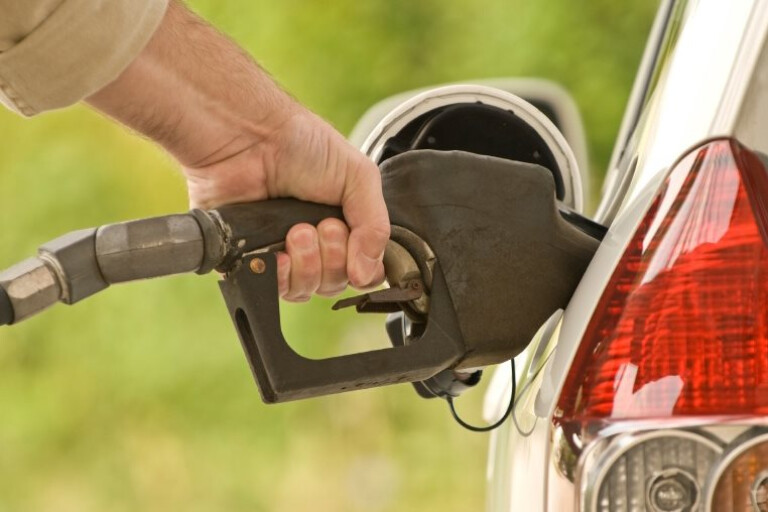
Tax reform/Luxury Car Tax
The AADA is in favour of taxation reform for the sector, and said “as part of the transition to EVs, Australia needs an urgent review of its Automotive taxation regime.
“Each year, Australians pay tens of billions in motoring taxes and charges to governments. According to the Bureau of Infrastructure, Transport and Regional Economics in the 2019-20 financial year, more than $32 billion in such charges were paid,” it said.
"These taxes are outdated and have been discredited by various independent taxation reviews. Australian governments should work together to abolish or restructure these taxes"
“As fuel-efficient vehicles are increasingly adopted and trends such as ride-sharing accelerate, Australia needs to consider the way in which we tax motorists and create a system which is fit for purpose for the future. At the federal level, a considerable part of that tax revenue has been drawn from the Luxury Car Tax (LCT).
“At a state and territory level we have significant stamp duty and registration charges applied to vehicle sales. These taxes are outdated and have been discredited by various independent taxation reviews. Australian governments should work together to abolish or restructure these taxes to provide consumers and local dealers with some relief, particularly as the new car market faces an uncertain future and supply remains severely constrained.
“Applying excessive taxes to new cars only disadvantages consumers seeking to buy vehicles which deliver greater safety as well as environmental and fuel efficiency benefits. These legacy taxes were introduced in an era when Australia still manufactured passenger cars and maintaining them only disadvantages consumers and local businesses. Domestic passenger vehicle manufacturing no longer exists, but the tax structures that were there to support it continue to make passenger vehicles in Australia more expensive than they should be.”

Federal Chamber of Automotive Industries (FCAI)
“However, the FCAI will not support any policy that puts fuel efficient vehicles using a range of technologies out of reach of every-day Australians"
The FCAI’s submission calls for the focus to be on the availability and affordability of low emission vehicles for Australian drivers.
Chief Executive Tony Weber said an ambitious and achievable fuel efficiency standard, technology mix, infrastructure investment and behaviour change initiatives are needed to reduce emissions, create a cleaner fleet, and ensure a sustainable automotive industry.
“With limited worldwide supply of battery electric vehicles set to be an issue for the foreseeable future, the discussion needs to be guided by evidence not emotion, research not rhetoric and proof – not predictions.
“Strong, practical, and challenging policy settings that acknowledge the unique nature of our market and customer preferences can support Australia’s mission to decarbonise the light vehicle fleet.
“However, the FCAI will not support any policy that puts fuel efficient vehicles using a range of technologies out of reach of every-day Australians, particularly those living on the outskirts of our capital cities and rural and regional areas,” he said.

Affordability
The FCAI said it will not support any policy that puts fuel-efficient vehicles, using a range of technologies, out of reach of everyday Australians. Affordability remains a significant barrier to entry.
A 100 per cent BEV mandate by 2030 would lead to the price of at least 30 per cent of the vehicles driven by everyday Australians to increase by as much as $17,000, it contends.
Incorrect policy settings that exclude certain technologies or make some products unavailable in Australia will result in older vehicles staying on the road for longer, which will not reduce emissions.
EV Supply
More than 75 per cent of new vehicle sales in Australia are SUV or light commercial. EV technology in these vehicles is limited with little availability and/or high prices.
Road-user charging
A simplified road-user charging approach should be applied to all transport sectors and technologies, not just EVs, as an economy-wide taxation reform to replace revenue currently received through vehicle registration, sales tax, luxury car and luxury sales tax, according to the industry body.
Charging Infrastructure
The FCAI believes greater attention on the reliability and capacity of the electricity grid is still needed. It said governments should work together to implement the National Construction Code 2022 requirement for new apartment buildings to be EV ready by 1 October 2023 and also develop measures to support easy and safe EV charging.

Motor Trades Association of Australia (MTAA)
In many ways, the MTAA's submission mirrors that of the AADA's as the key points cover familiar territory.
No ICE ban/penalties for keeping an ICE car
The MTAA believes EV uptake mechanisms, processes, and incentives utilised in other countries cannot necessarily be directly transplanted to Australia.
It said: “Too often, simple comparisons are made with countries such as Norway with misguided assumptions that whatever works there will work here. Australia has its unique logistical challenges in terms of expanding its EV uptake – a widely dispersed population and land mass, infrastructure challenges, a small right-hand drive vehicle market that is not at the forefront of global vehicle manufacturer supply decisions, lack of local manufacturing, lack of incentives and lack of CO2 emission targets. Equally, European consumer preferences are not those of Australians and should not be imposed on Australian consumers.”
The MTAA says it does not support bans on selling certain vehicles by specific dates. “The imposition of penalties to change consumer behaviour is already manifesting in critical touch points in some European countries where a societal divide is starting to emerge due to a stick-and-carrot approach that is arguably not warranted and increasingly divisive,” its submission noted.
“Too often, simple comparisons are made with countries such as Norway with misguided assumptions that whatever works there will work here."
“Punitive action against ICE vehicle owners through increased taxes and other policy levers (registration, levy, etc.) will cause public anger, particularly among groups where they are prevented from accessing EVs at an acceptable price point, their location or work does not lend itself to EVs available at the time or other factors. Another European observation is that where these policy and tax levers were exercised, there was evidence of increasing discontent and anger – particularly in high-energy environments. Access to EVs must be equitable and fair for all.”

Incentives
Any strategy needs to develop and include an incentives and subsidies framework that may include, but is not limited to: private and public charging, targeted consumer purchase incentives, subsidisation or removal of government fees, and non-financial incentives – such as transit lane access, free parking, access to any government charge points, etc.
Tax reform/Luxury Car Tax
Like the FCAI, the MTAA and its members are in favour of reform for automotive-related taxation, including solutions to road-user charging and the abolition of Stamp Duty and Luxury Car Tax.
Skills shortage and training/end-of-life recycling
Critical to the future success of EVs is to ensure an automotive workforce with the capacity and capability to meet the demands of the entire fleet and the nation’s reliance on road transport.
Therefore, it says, any strategy must take into account “the ongoing training of existing automotive professional tradespeople who service, repair, and maintain the fleet, as well as the training of new industry participants”.
“Encourage rapid uptake too fast and risk decoupling from infrastructure rollout”
Additionally, it must factor in the decommissioning, destruction and recycling/re-use of end-of-life vehicles expected to increase because of EV uptake and the fleet’s transition.
Overall, the National EV Strategic Plan must balance ambition and risk to achieve the aspiration of transitioning Australia from ICE to EV successfully, according to the authority.
“Encourage rapid uptake too fast and risk decoupling from infrastructure rollout,” it warned. “Failure to recognise and accept Australians’ preference for home charge points and provide an imbalance of resources and incentives into public infrastructure without incentivising home charge points risks undermining outcome achievement and goodwill. Attain EV uptake without the necessary infrastructure, power grids to feed it, the services to maintain and repair EVs and other parts of the fleet, or use penalties to direct outcomes, then risk the entire program.”

The Australia Institute
According to one of the country's leading think tanks, for too long Australia has had no nationally co-ordinated plan to reduce transport emissions. To achieve legislated emissions reductions targets, The Australia Institute says major changes, supported by Government action, will be necessary.
"Federal Government leadership, policy and funding is needed to fast track the uptake of EVs and phase out the sale of internal combustion engine (ICE) vehicles," its own submission said.
"Being a late-mover to EV technology, Australia has the benefit of hindsight. Australia’s EV strategy should be informed by international experience, modelled on successful international policies, and learn from their pitfalls.
"Fuel efficiency standards have been adopted in approximately 80 per cent of the global light vehicle market and would significantly reduce transport emissions, while encouraging manufactures to bring affordable EV models to Australia and reduce fuel cost for Australian motorists. The introduction of mandatory fuel efficiency standards is a pivotal part of the national EV strategy, and can be modelled on successful overseas standards.
Fuel-efficiency standard
These should be implemented as soon as possible, the Institute says, aiming for 100 per cent of vehicle sales being electric by 2030 or 2035 at the latest and have integrity – be informed by independent emissions data with no loopholes for heavy vehicles or particular manufacturers.
Accessibility for all
The Federal Government should structure its policies around ensuring that low-income households and individuals can access EVs, eg. targeting subsidies at low-income households and making subsidies available at point of sale rather, than as post-sale rebates.
It should "consider the establishment of a regional EV strategy, to ensure regional areas are not left behind, and to address the obstacles to EV adoption that are unique to the regional context."

Incentives/disincentives and 'feebates'
On this point, The Australia Institute's views are three-fold:
Firstly, it believes the national EV strategy should provide temporary and targeted subsidies for EVs, particularly (as outlined above) for low-income households.
Secondly it suggests the Government should remove the instant asset write-off provisions for commercial vehicles that subsidise heavy vehicles and utes for small business owners, and modify the Fuel Tax Credit scheme to remove, or cap, large incentives for diesel use – particularly in the mining industry.
And finally, it recommends a 'feebate' system claiming it can be a cost-neutral method of disincentivising higher-emitting vehicles and incentivising lower-emitting vehicles, thereby reducing passenger vehicle emissions – pointing to France’s Bonus Malus and New Zealand’s Clean Car Discount as examples of where this is already happening.
Taxation
As well as those changes to incentives on tax write-offs outlined above, the think tank says the Government should change the definition of a fuel-efficient vehicle under the Luxury Car Tax (LCT) from 7L/100km to 0L/100km.
It also recommends exploring policy changes that increase government revenue while decreasing transport emissions.
For example, the Australia Institute has proposed changes to the Safeguard Mechanism that introduce a voluntary, fixed-price polluter-payment of $25 a tonne. This, it says, would raise billions for the Commonwealth to direct to industry policy to build climate solutions including battery or electric bus manufacturing.
Fleet targets
Expand from the current target of 75 per cent of Commonwealth vehicles being EVs by 2025 to 100 per cent by 2030. According to the think thank, PHEVs should be excluded from this target, because...
Forget hybrids
Emissions associated with PHEVs are highly dependent on how they are charged and driven. PHEVs only reduce emissions if charged enough to be predominantly driven using the battery alone. For this reason, they should not receive public funding, according to the Institute.
It also believes PHEVs should be removed from the current Clean Car Discount policy. The Commonwealth fleet should target ‘zero-emissions vehicles’ instead of ‘low-emissions vehicles’ – excluding PHEVs. If fuel-efficiency standards are introduced, it contends hybrids should not receive any super credits or additional support.
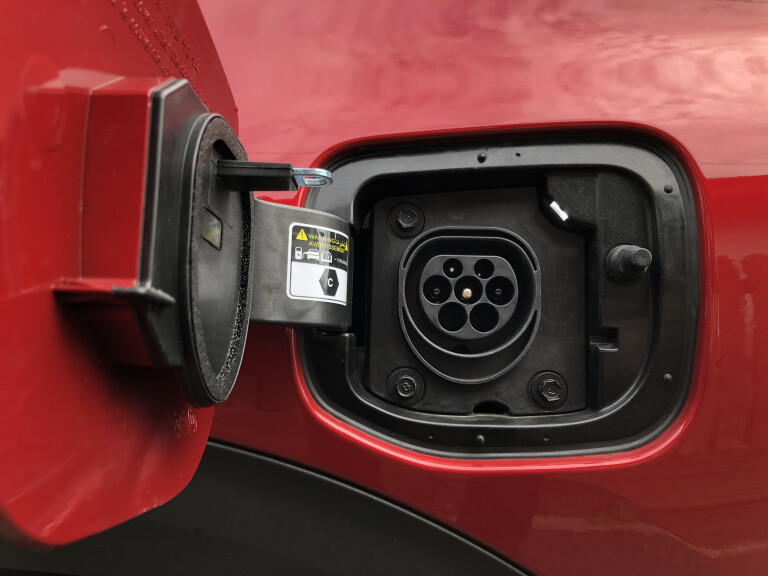
Uber
For its own response to the Government's consultation, Uber submitted its 2021 report – Electrifying rideshare: Accelerating towards a green future.
In said report it made four recommendations.
The first was to close the interim cost gap between internal-combustion engine vehicles and EVs, especially among high kilometre drivers. That, says the ride-sharing giant, could be achieved by; providing upfront point of sale incentives for EV purchases, including second-hand vehicles, waiving or reducing other fees and taxes such as stamp duty and registration, and by giving EVs urban access advantages such as access to high occupancy lanes.
The second was to ensure all high-km drivers can reliably access overnight charging at or near their home, where they would normally park. This could be done by; supporting the rollout of at home charging infrastructure as well as suburban ‘near home’ public charging with kerbside ‘right to charge’ policies, introducing EV-ready building codes and laws to make it easier for renters and people in multi-unit dwellings to install at home chargers, and continuing to support the roll out of rapid, affordable public charging networks in metropolitan areas, ensuring equitable distribution across cities.

The third focuses on the delay of EV-only road-user charges and policies which widen the interim cost gap, particularly for high km drivers, with policy options that could be looked at including a cap or exemption for commercial EV drivers, either in perpetuity or for around 5-10 years, and moving away from fuel tax and toward a road-user charging scheme for all cars.
And finally, Uber suggested stimulating the market through standards and targets to ensure drivers can access long range BEVs at a reasonable price. This could be done by; introducing fuel-efficiency standards, which would also help lower the cost of fuel for all Australians, introducing zero-emission vehicle sales targets and mandates on vehicle manufacturers/distributors to increase supply and by stimulating demand through point of sale incentives and removal of taxes targeted at affordable and second-hand models.

COMMENTS